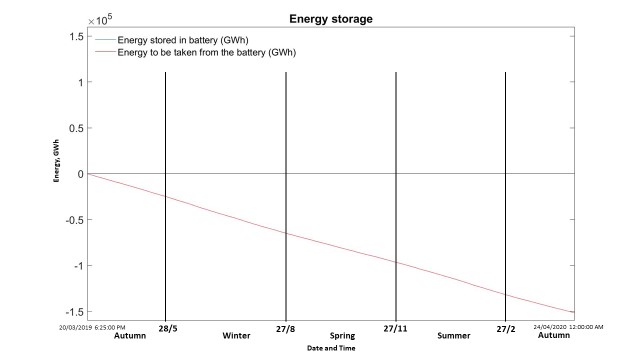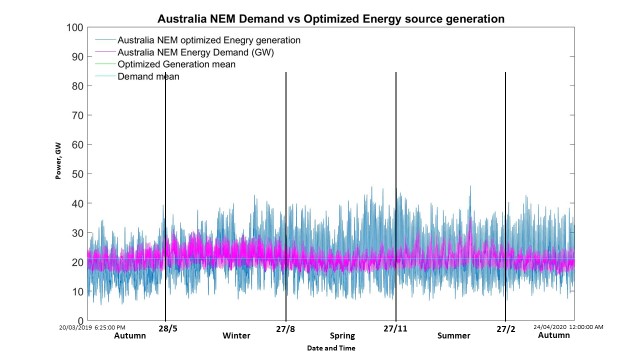Projects:2020s1-2432 How much Energy Storage does Australia need?
Contents
Introduction
The aim of this project is to gain perspective on how much energy storage is needed to ensure demand supply balance due to the intermittency of renewable energy sources. A significant amount of renewable energy generation has been added since 2018. In 2019, 24% of Australia’s electricity generation is from renewable energy[1]. The increasing reliance on renewable energy led us to question how much energy storage does Australia need? Because energy storage is such an important aspect of renewable energy growth. Australian Energy Market Operator (AEMO) projects that by 2036 Australia's battery energy storage capacity will be 6.6 GWh[2].
Project Team
Project Students
- Nasser Khanezan
- Jun Wei Kuan
Project Supervisors
- Derek Abbott
- David Vowles
Background
Research
Result & Discussion
As the result, we have completed the analysis for three different cases. The first case is the baseline case, with the condition of existing renewable energy source. The second case is the case, where we multiplied the wind energy and solar energy generation with its optimized coefficient while keeping the rooftop PV and hydro energy generation fixed. Whereas, in the last case, we scaled up all the renewable energy source with a scaling factor, that we have calculated by taking the ratio of total energy demand to total renewable energy generation in a year.
a) Baseline case
A graph of the existing renewable power generation(GW) versus power demand(GW) is plotted with no modification on the renewable energy source. As shown in the figure xx, the power demand is significantly higher than the renewable power generation throughout the year. In order to meet the power demand required, excess power supply is required to be retrieved from the batter power storage. Therefore, a constant extra power supply is needed throughout the year, and eventually a Energy storage graph with a constant negative slope is obtained, which indicated infinite battery storage.
b)Renewable energy generation with: 7*wind + 7.7*solar + 1*rooftop PV + 1*hydro


